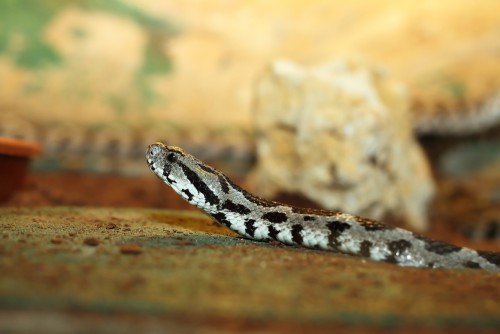Research from the Department of Ecology, Evolution and Behavior at the Hebrew University answers the question

In a study recently published in the journal PLOS Genetics (one of the leading monthly journals in genetics and evolution today), Hebrew University researchers revealed new discoveries about the evolution of venom. Until now it has been thought that venom in all animals evolves under very rapid evolution (called 'accelerated evolution' or 'positive selection') due to an arms race between the venomous animal and the animals it preys on or that prey on it.
However, Hebrew University researchers led by Dr. Yehu Moran from the Department of Ecology, Evolution and Behavior at the Alexander Silverman Institute of Life Sciences discovered that the reality is much more complex. In "young" venomous animals (that is, groups that became venomous a short time ago in evolutionary terms) venom does indeed develop under positive selection. On the other hand, in the venoms of "ancient" groups (that is, those that have been venomous for hundreds of millions of years) the evolution is actually very slow. That is, their venom is already "optimal" for the niche in which they live and suits their needs, therefore its evolution is very slow (a phenomenon also called 'shift evolution' because the trait does not change). This discovery casts doubt on the arms race theory and suggests that "young" venomous groups such as snakes and cones (venomous sea snails) that became venomous "only" 3-50 million years ago are still adapting to new niches in nature and therefore have an advantage in rapidly changing their venom, while "old" venomous groups ” such as scorpions, spiders, stingrays and stingrays (jellyfish and sea lilies) are already adapted to their niches.
Despite all of the above, we find very ancient traces of accelerated evolution also in the genes encoding the venom components of "ancient" animals. According to Dr. Moran, "This indicates that at the beginning of their journey, these groups experienced the same evolutionary pressures that the younger groups experience today, and we present a theory of the evolution of venom in two steps (A two step mode of evolution): In the first step, the venom undergoes accelerated evolution in order to allow Adaptation to the niche (ie acquiring the ability to quickly and efficiently paralyze the prey), while afterwards there is a long period of slow evolution and a shift that causes the venom to remain almost the same (because it is already very effective in paralyzing the prey). Beyond that, it is possible that the ancient signs we found of accelerated evolution are a sign of extreme environmental changes that occurred a long time ago on Earth and caused accelerated changes over a short period of time in the venom of the ancient animals."

One response
The researcher's name is Yehu Moran. And it wasn't... It's strange that you don't check proofreading. This is his website http://www.yehumoran.com